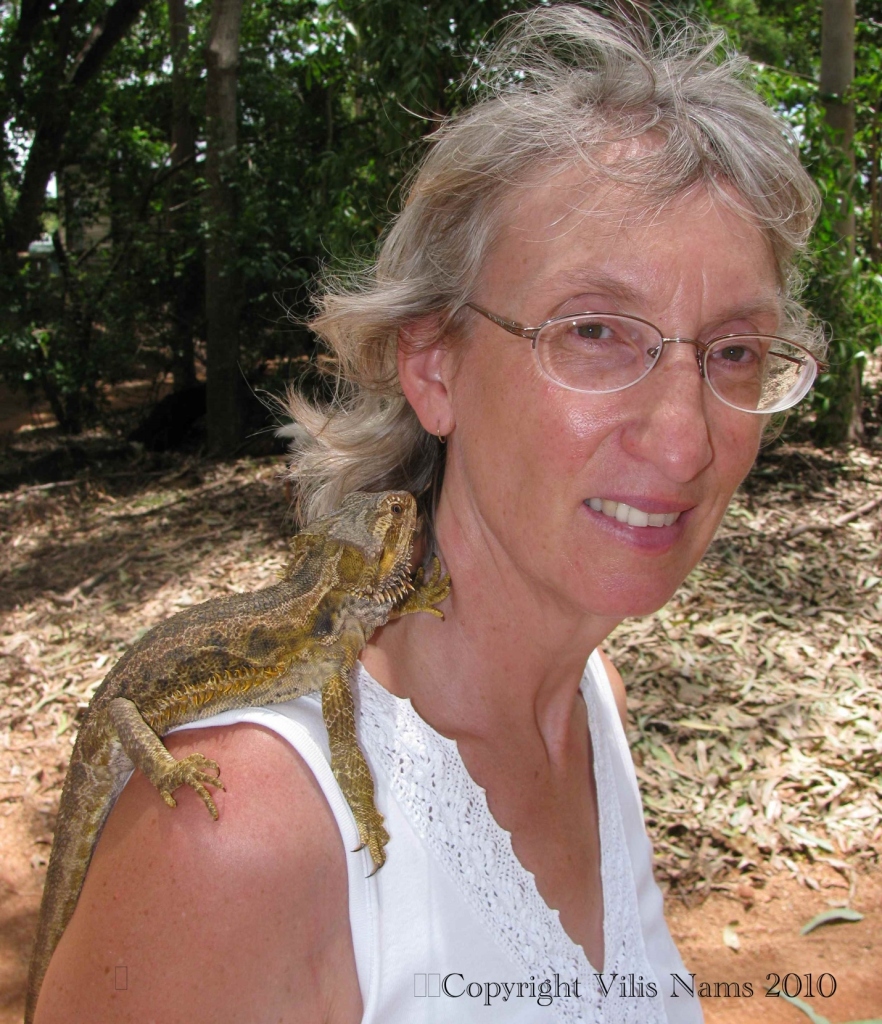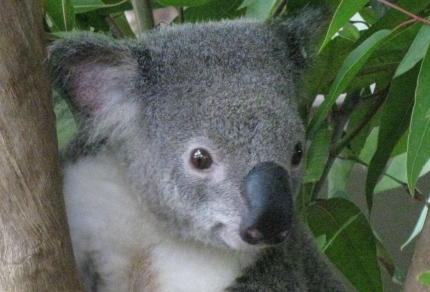
Here I am with a Bearded Dragon
As a naturalist and writer, I love to speak to children about wildlife and writing, with the hope that I’ll inspire them to care for the earth, and to realize that writing can be fun. I’ve participated in the Nova Scotia Writers’ Federation’s educational program Writers in the Schools (WITS) for almost twenty years.
Last week, I had a WITS visit to Pictou Elementary School, a small rural school in beautiful northern Nova Scotia. I spoke to every class in the school, and one of my props was two tables covered with magazine articles I had published in the children’s nature magazine Ranger Rick.
I challenged the Grade 5 students to make their writing come alive by using strong, specific words – particularly action words. We discussed beginnings, middles, and ends, and I read them my vampire bats article to illustrate how I had first created a mysterious ‘hook’ to catch the reader’s attention, and then filled the body of the article with solid scientific facts inside a story about a group of vampire bats engaged in their nightly hunt for blood. The story’s end, of course, wrapped it up – in this case, with information about how adult female vampire bats share food, thus enabling bats that didn’t get a meal to survive until the next night’s hunt. The students enthusiastically absorbed everything I said. We finished our session with a timed creative writing exercise in which each student plucked three words or phrases out of envelopes – an occupation, an activity, and a place – and then connected them in a piece of writing. Some students wrote a few sentences; others wrote more than a page. Many were keen to share their work, and some had hit the assignment ‘nail’ square on the head.
I spoke to the younger students (Primary to Grade 4) about steps in the writing process (find an idea, gather information, write, edit, submit, publish). Then I read them their choice of one of my Ranger Rick articles. One class chose the vampire bats article, one class chose an article about mountain goat kids playing on a mountainside, and the other classes chose an article about a lynx going hunting. In the last article, the lynx was the narrator and the kids came along for the hunt. I also showed these classes a PowerPoint presentation of Australian animals that my husband Vilis and I had seen during our year in Australia in 2010. I followed that up with the assignment of working together as a class to compose a brief story that incorporated a favourite animal, a favourite sport, and a favourite food. Like the Grade 5 class, the younger students had loads of questions about animals and writing – more than I could answer in our allotted time.
Again, I was struck by the students’ enthusiasm for animals, as I have been during the many years I’ve participated in WITS. If we adults can keep that enthusiasm alive as those children grow up, our world will be a better place for the wild animals, plants, and other organisms that inhabit it.




